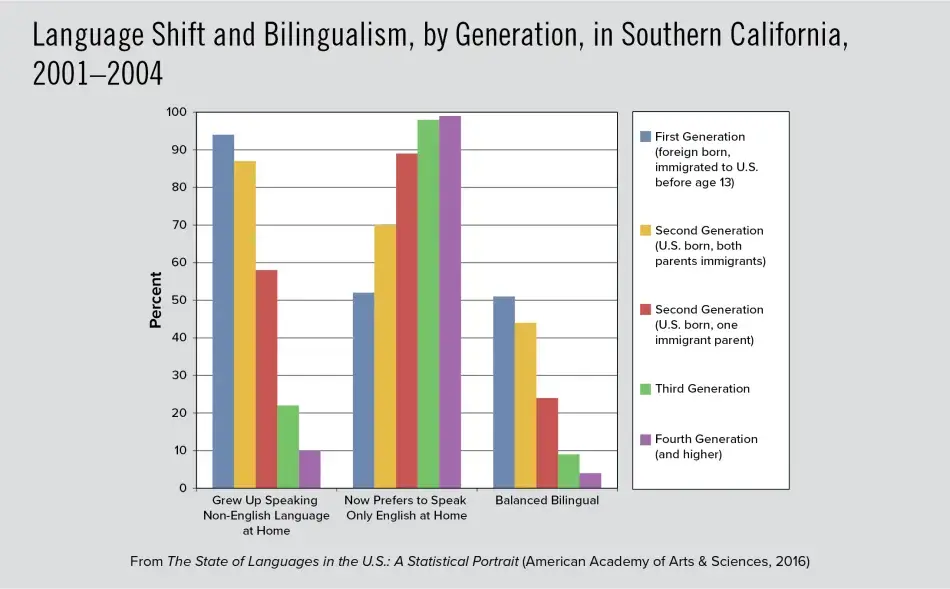Language Shift and Bilingualism, by Generation, in Southern California, 2001–2004

Bilingualism can have a number of meanings and represent a continuum of skills and expertise. In the chart above, a “balanced bilingual” is able to understand, speak, read, and write both English and a non-English language “well” or “very well.” Heritage speakers are well positioned to develop balanced bilingualism but, as the chart above shows, they seldom sustain it. Even among those who immigrated as children, barely half were balanced bilinguals as adults. By the third generation, less than 9% remained balanced bilinguals.
Among U.S.-born children of two foreign-born parents, 70% adopt English-only preferences, even though 87% of them grow up speaking a non-English language at home. By the third generation, 22% grew up in a household where a language other than English was spoken at home, but 98% preferred to speak English, accounting for the rapid decline in the use of heritage languages over time.